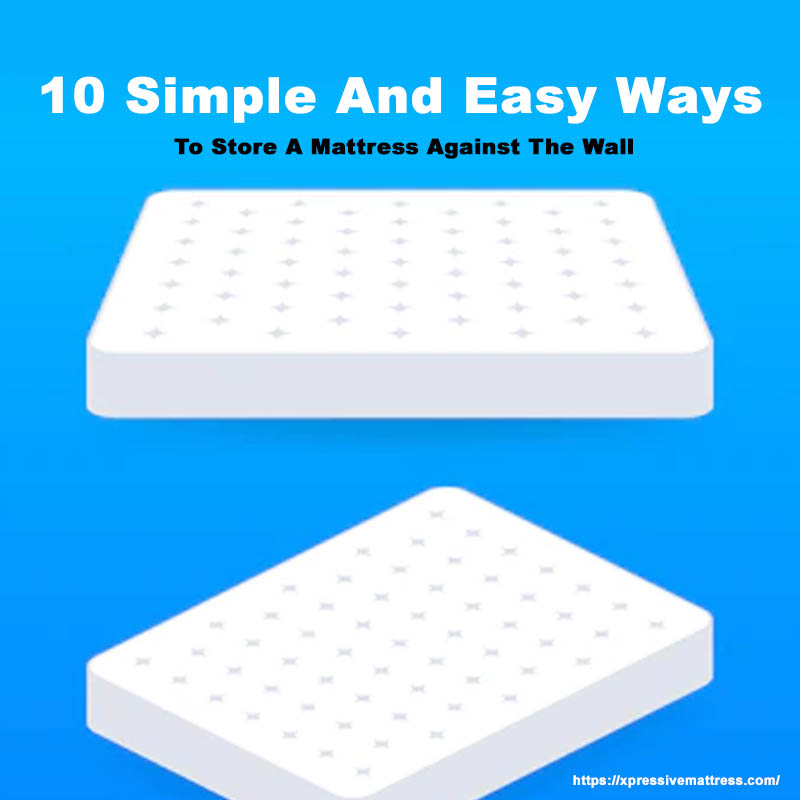Repairing a mattress tear can be intimidating, but it doesn’t have to be!
With the right tools and materials, you can quickly repair your torn mattress in no time.
Here are some tips on how to do so:
- Ensure the area around the tear is clean and dry before beginning any repairs.
- Then gather supplies such as fabric glue or tape (depending on what type of material your mattress is made from), scissors for cutting patches if needed, and needle and thread for stitching together pieces of fabric.
- Once everything has been appropriately gathered, apply adhesive along both sides of the rip/tear using a brush or roller, depending on which works best with your product.
- Next, use duct tape over the top of this layer to ensure extra strength when patching things back together again.
- Making sure to pull only a little tight enough. Otherwise, further damage could be done instead! Stitch any loose ends securely into place with solid thread.
In conclusion, repairing tears in mattresses isn’t difficult at all once you know exactly what needs doing
always remember to take safety precautions first and follow instructions carefully afterward!
What Is The Best Way To Repair A Tear In A Mattress?
The best way to repair a tear in a mattress is by patching it.
You will need some supplies, such as fabric glue or adhesive tape.
Scissors.
And an appropriate piece of material (e.g., cotton cloth) that matches the color of your mattress for the patch.
Clean around the area where you want to apply the patch with soap and water, so there are no dirt particles left on it before using any adhesives.
Then cut out two pieces from your chosen material – one slightly larger than the other.
It should be big enough to cover up all sides of torn part entirely when placed over it like sandwich layers.
Apply fabric glue/adhesive tape between these two patches, then place them carefully onto the damaged area
That makes sure they stick correctly without leaving any air bubbles inside while pressing firmly along the edges until dry if using glue instead of tape.
Finally, let this patched portion sit undisturbed overnight, allowing time for proper bonding before use again!
What Tools And Materials Do You Need For Mattress Tear Repair?
To repair a mattress tear, you will need the following tools and materials:
- Scissors or a utility knife.
- Needle and thread. Fabric glue.
- Patching material such as leather, vinyl, canvas, or denim (depending on what your mattress is made of).
You may also want some sandpaper handy in case rough edges need smoothing.
- Use the scissors/utility knife to remove frayed threads around the hole. Hence, it’s nice and neat before applying adhesive.
- Then apply an even layer of fabric glue over both sides of the torn area – make sure not to get too much!
- Next, firmly place your chosen patching material (leather) onto one side. This should cover most, if not all, of the damaged area depending on how big it was initially.
- Finally, sew along each edge with strong stitches using matching colored thread for best results. Leave overnight until completely dry before testing its strength by gently pulling at either end without damaging other areas nearby!
How To Identify And Access The Torn Area Of The Mattress?
Identifying and accessing the torn area of a mattress can be tricky.
Here are some tips to help you out:
- Look for signs of wear – check all sides, corners, seams, and edges. Look for tears or rips in fabric coverings and indentations indicating sagging areas.
- Feel around with your hands – press down on different parts of the mattress to identify any soft spots where there might be damage underneath.
- Use a flashlight if necessary – this will allow you to see into crevices more efficiently, so you don’t miss anything!
- Once identified, access the damaged area by removing whatever is covering it (e.g., sheets/blankets). This should give you an unobstructed view so that repairs can begin immediately!
It’s essential not only to find but also to repair these issues quickly because mattresses provide support.
At the same time, we sleep, which helps us stay physically and mentally healthy over time
so taking care of them is essential!
How To Patch A Tear In A Mattress Using Adhesive And Fabric?
You’ll need adhesive and fabric to patch a tear in your mattress.
Here’s how to do it:
- Start by cleaning the area around the tear with soap and water.
- Let dry completely before proceeding.
- Cut out a piece of fabric slightly larger than the hole or rip in your mattress (make sure it’s big enough so there won’t be any gaps).
- Apply an even layer of adhesive on both sides of where you will place your new piece of fabric. This helps ensure that everything sticks together correctly!
- Place one side down onto the surface near/around where you want to repair, then press firmly for about 30 seconds until secure. Repeat the process with the other side if necessary!
- Let sit overnight before using again so that all adhesives have had time to fully cure and bond securely into place without coming apart quickly when pressure is applied.
Can You Repair A Tear In A Mattress With Sewing?
Yes, you can repair a tear in a mattress with sewing.
Here are the steps:
- Gather supplies – thread, needle, and fabric.
- Cut out two pieces of matching fabric covering both sides of the rip or tear.
- Place one piece over each side of the hole and pin them together to hold it while stitching.
- Sew around all four edges using tiny stitches, so they don’t show through on either side when finished.
- Trim any excess threads from your work area once complete.
This method is excellent for repairing minor tears, but if there’s more extensive damage, professional help may be needed!
It’s important to note that this repair should only be done by someone who knows how to sew correctly, as incorrect techniques could cause further damage or even worsen matters!
How To Reinforce The Repair To Prevent Further Tearing?
To reinforce the repair to prevent further tearing, there are several steps you can take.
- Make sure your fabric is clean and dry before beginning any repairs.
- Use a strong thread for stitching. This will help ensure that it holds up over time.
- When sewing on patches or mending tears in clothing items such as jeans or jackets with heavy fabrics like denim or canvas. Consider using an extra layer of interfacing material underneath the patch/repair area to provide additional strength and stability against future wear-and-tear damage.
- Try hand-stitching instead of machine stitching – hand stitches tend to be stronger than machines due to their smaller size and tighter tensioning capabilities (which helps keep them from coming undone).
- Finally – always remember: reinforcing a tear doesn’t guarantee its prevention!
Regular maintenance checks should still be done to catch small rips and holes early on before they become more significant problems down the line!
What Are Some Precautions To Take When Repairing A Mattress Tear?
When repairing a mattress tear, it is essential to take certain precautions.
- First, ensure the area around the tear is clean before beginning any repairs. This includes vacuuming or wiping down with an appropriate cleaner if necessary.
- Next, use only products specifically designed for mattresses when making repairs.
- These can be found at most home improvement stores or online retailers specializing in bedding supplies.
- Additionally, wear protective gloves while handling materials such as glue and fabric patches to avoid skin contact during repair work.
- Finally, allow ample time for all process parts – from cleaning to patching. That’s to ensure proper adhesion between fabrics and other components used in mending your mattress tear!
In Summary: How To Repair Mattress Tear?
In conclusion, repairing a mattress tear is easier and cheaper than it may seem.
With the right tools and materials, anyone can do this job quickly!
It’s important to remember that you should always use high-quality products when fixing your mattress so that it lasts longer.
Additionally, clean up any messes made during the repair process before putting back on bedding for maximum comfort and safety.
Finally, if all else fails, don’t be afraid to call an expert specializing in mattress repairs
they will have more experience with these issues than most people ever need!
All things considered.
Taking care of small tears now could save you from having more significant problems down the road.
That makes them well worth addressing sooner rather than later.



